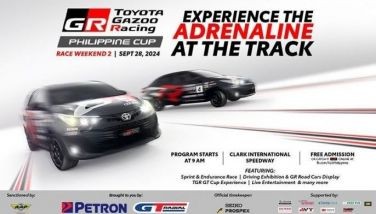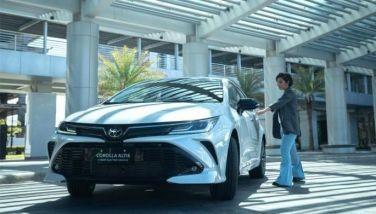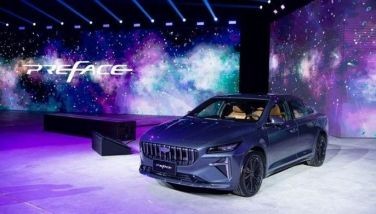Next-gen engine technologies vs rising oil prices
As I type this, gasoline prices are hovering at the P60-per-liter mark. It hurts. And it’s definitely no longer a pinch, but a knock-out Pacquiao upper cut to our collective chins.
So what are we going to do? Park our not-even-paid-for cars and ride a bike or scooter to work? Or line up with the masses to get a ride on the MRT, FX taxi, bus, or jeepney?
Well, short term that seems to be the answer for a fair number of motorists. The picture is rosier longer term, however.
Because as far as weaning us from our century-old dependence on oil is concerned, there are several feasible technologies on the horizon. Some of them are already available (albeit in other countries) while the others are just around the corner, so to speak.
Hybrids
Time was when gas-electric hybrid vehicles appealed only to motorists more concerned about saving the environment than saving on gas bills. Spiraling gas prices changed all that.
Now there’s a stampede to buy hybrid vehicles, at least in markets where hybrid vehicles are sold. Today, Honda and
The next major development in the hybrid scene is expected in 2010, when GM’s Chevy Volt, a plug-in hybrid electric vehicle, is expected to go into production.
The Volt, which can be recharged from a home electrical outlet, is expected to go on sale in early 2011.
The Volt is designed to remain primarily in electric mode in the first 60 or so kilometers of driving. Which means that for most people, they can get to and from work without the gas engine even being fired up.
Hybrid technology leader
Hydrogen
If you can’t wait five, ten or 20 years for the much-hyped “hydrogen economy”, then step right up. Several companies are ready to sell you vehicles that run on the fuel that’s much cleaner and gets higher mileage than gasoline or diesel.
There are three significant downsides, however. First is getting the hydrogen. Gas suppliers sell hydrogen in cylinders but very few filling stations exist today.
In
Second is the price tag: It costs as much as US$60,000 just to convert a conventional internal combustion engine to run on hydrogen – about the price of an entry-level Porsche.
Hydrogen can be used in two ways to power vehicles: either directly into a modified internal combustion engine (which are the engines we use now), or via fuel cells (see below).
The third downside is hydrogen’s limited range. Most cars converted to run on hydrogen have a driving range of about 200 kilometers, which means you can drive to
Fuel cells
Major carmakers, on the other hand, are focusing on fuel cells, convinced they are even more efficient and cleaner than hydrogen internal combustion engines.
What’s the difference? Instead of burning fuel in an engine, fuel cells are more like batteries, using an electrochemical reaction between hydrogen and oxygen to create electricity.
There’s a long wait for this technology to hit the showrooms, though, which is why Anuvu (say “a new view”), a fuel cell developer in
Anuvu promises to deliver a fuel cell Frontier within 120 days of an order. The cost? A cool $99,995. Needless to say, mass production would drive the price down significantly. The fuel cell Nissan Frontier is estimated to be able to sticker for US$20,000-$25,000 if 100,000 were built.
The big automakers are all working on fuel cells but none predict mass production vehicles this decade. The California Fuel Cell Partnership, which has brought carmakers together at a test hub in Sacramento, doesn’t expect take off until 2012-2020, with numbers in the low thousands initially until an infrastructure can be developed.
Assuming hydrogen can be produced in large volumes at competitive prices, hydrogen pumps could be added to existing gas stations. Some companies are developing home fuel cell stations that would extract hydrogen from natural gas.
In contrast,
Fuel efficiency in the FCHV-adv was improved 25 percent with better braking and other changes. The new fuel cell vehicle can also start and run in temperatures as low as -30° Celsius, a technological feat.
Rival Honda Motor Co.’s revamped fuel cell vehicle started rolling off a Japanese factory floor just last month. The FCX Clarity, which like all fuel cell vehicles runs on hydrogen and electricity and emits only water as a byproduct, became available for lease to a very limited number of customers in
Honda intends to export just 200 Claritys to the U.S. over the next three years, with selected customers offered a subsidized, $600-a-month, 3-year lease, which includes maintenance and insurance. With the small volume, the vehicles cost several hundred thousand dollars each to manufacture. Honda says the vehicle is three times as energy-efficient as a gasoline-powered car.
The Clarity does zero to 100 kph in 10 seconds, has a top speed of 160 kph and runs for 450 km on a single tank of compressed hydrogen gas – all acceptable specifications for a regular car.
Still, there are downsides: There are only a few hydrogen filling stations scattered around countries where they are sold. And the Clarity is still fairly pricey even though it’s already subsidized.
Full electric
Fans of sports cars and electric vehicles (EV) have surely heard about the Tesla electric sports car from
First unveiled as a prototype in 2006, the revolutionary Tesla Roadster awed countless car enthusiasts with its supercar performance, zero-emissions, and zero appetite for fuel.
To date, over 900 highway-legal Tesla Roadsters have been reserved, with the company preparing for the introduction of a 5-passenger sports sedan in 2010.
The Tesla Roadster’s battery pack – the car’s “fuel tank” – represents the biggest innovation in the Tesla Roadster and is one of the largest and most advanced battery packs in the world.
It’s safe, light, durable, and recyclable. The battery stores enough energy for the vehicle to travel about 350 kilometers without recharging, something no other production electric vehicle can claim.
The Tesla’s Ferrari-beating acceleration comes from a motor about the size of a basketball and weighs just 115 pounds. The Tesla Roadster has only two forward gears. Unlike a manual transmission, the car will not stall if you have it in the wrong gear.
There’s also no clutch pedal. Just move the lever and the electronic control module takes care of the shift, so you can launch from a full stop to freeway speed without taking your foot off the accelerator or your hands off the wheel.
When you shift gears or accelerate in the Tesla Roadster, the Power Electronics Module (PEM) translates your commands into precisely timed voltages, telling the electric motor to respond with the proper speed.
The PEM also controls motor torque, charging, and regenerative braking, and it monitors things like the voltage delivered by the Energy Storage System, the speed of rotation of the motor, and the temperatures of the motor and power electronics.
The PEM controls over 200 kW of electrical power during peak acceleration – enough power to illuminate 2,000 incandescent light bulbs.
With a 0 to 100 kph acceleration of 3.9 seconds, a 13,000-rpm redline, and the fastest top gear acceleration of any production car tested by Car & Driver magazine, the Tesla’s zero-appetite for fuel is truly just the icing on the cake.
The bottomline
Unless some car company starts selling their hybrid models in our showrooms anytime soon, it looks like relief from runaway oil prices is a good five (or more) years away.
Not only that, count on these new-generation powerplants to be breathtakingly expensive when they eventually debut. Which makes those FX taxis suddenly look like a wonderful proposition indeed.
Our little outburst and subsequent resolution brought about by our frustration with rotten road practices got a lot of positive reactions from our readers. And we’re glad to report that the Rock Ed road safety effort is moving on full speed ahead. We’ll keep you posted on the developments as they happen. In the meantime, here are some of those very encouraging reactions…
Thanks for the counterflow article. I’ve always said: the way we drive is the way we sometimes are as Filipinos; kanya-kanya leads to chaos. – 09175354028
I’m glad you had the Rock Ed experience. I’m sure you’ll want to do more with them. I’m with Rock Ed Iloilo and it’s been a rewarding experience. – Dr. Paul Francia
Hooking up with Rock Ed to educate motorists is a great idea! I believe you should aim at educating not only car drivers, but everyone who uses the roads. This includes pedestrians and motorcycle riders (a lot of who consider themselves above traffic regulations). I hope this can help improve traffic. – Anonymous
Please organize a lecture tour regarding the bad driving habits we have. I am sure there will be volunteers who will want to help. I will be one of them. – 09286582923
If words can kill I would have killed many insensitive drivers who invade the wrong side of the road just to get ahead of others. – 09217231115
Speak out, be heard and keep those text messages coming in. To say your piece and become a “Backseat Driver”, text PHILSTAR<space>FB<space>MOTORING<space>YOUR MESSAGE and send to 2840 if you’re a Globe or Touch Mobile subscriber or 334 if you’re a Smart or Talk ’n Text subscriber or 2840 if you’re a Sun Cellular subscriber. Please keep your messages down to a manageable 160 characters. You may send a series of comments using the same parameters.)
Editor’s note: As a parting shot for this week’s Backseat Driver, I’d like to reiterate my invitation to our readers to play the role of motoring journalists for a day. In order to facilitate more interaction between us and you, our loyal readers, we’re arranging test drives/photo shoots with our friends from the automotive manufacturers’ side. Readers who might want to try being motoring journalists for a day are invited to email samples of their work to [email protected]. We’ll be waiting for your stories and hopefully give you the shot at getting on “The Passenger’s Seat”.
- Latest




























